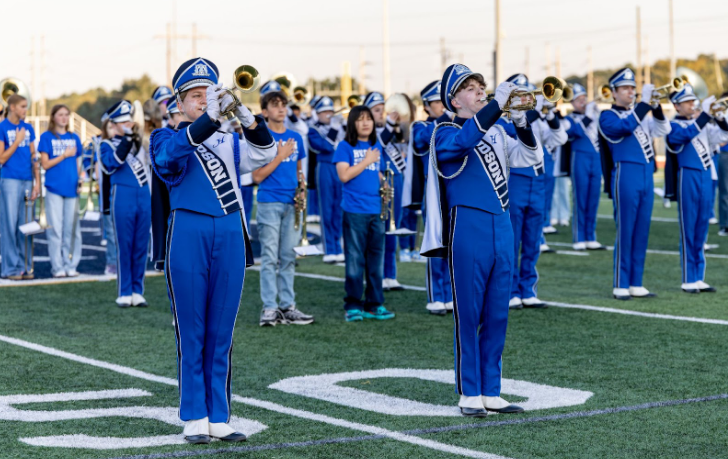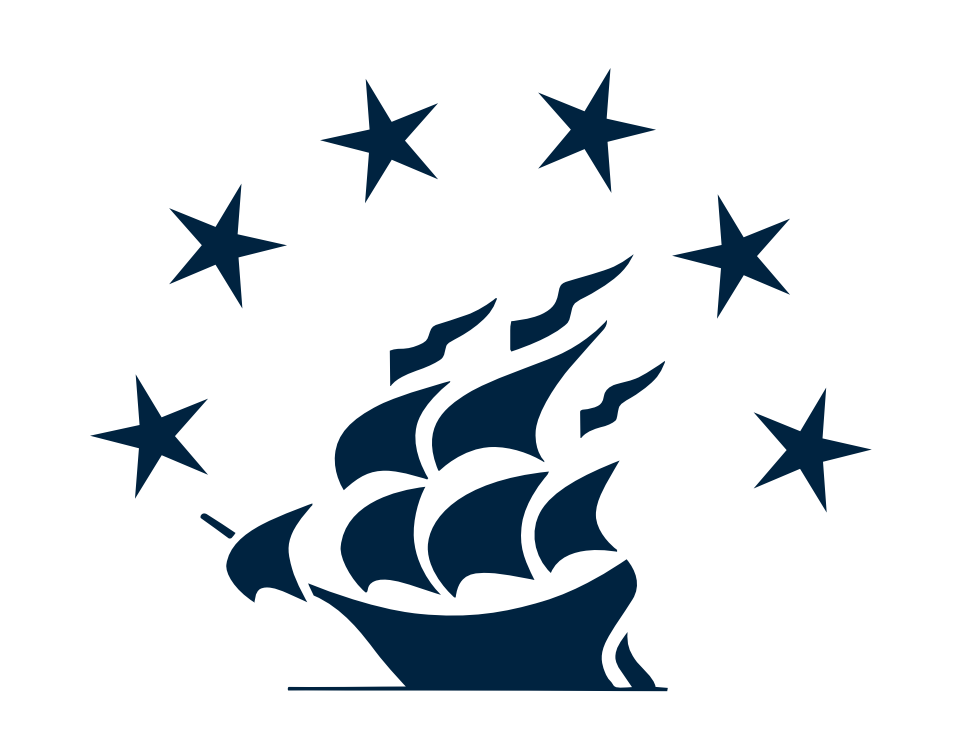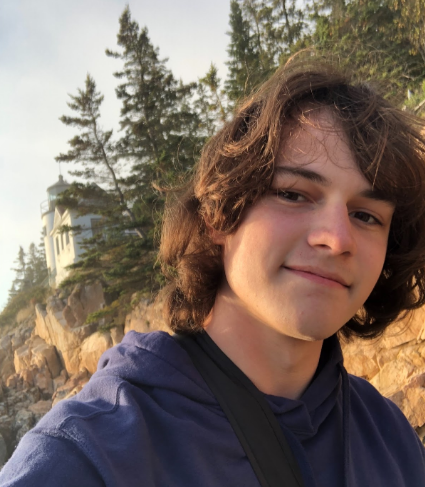On Jan. 27, 1700, several fishing villages along the east coast of Japan were washed away by a tsunami. However, this tsunami was unusual; unlike the hundreds of others that had struck Japan before, this one had struck without an accompanying earthquake signaling its arrival. Thus, Japanese historians dubbed it the “orphan wave,” and its origin would remain a mystery for hundreds of years.
A few hours earlier, thousands of miles across the ocean, the native people of the west coast of North America witnessed something truly apocalyptic: great shaking that turned the ground to liquid, the sea drawing back along with all the water in it, then rushing forward in a great wave, destroying entire villages and leaving thousands to drown. This spawned legends that would be passed down until this day. However, as two tectonic plates crash together off the pacific coast of North America, the horrors that those people witnessed over 300 years ago may soon happen again.
Today, Northern California, Oregon, Washington and British Columbia, a region home to over 16 million, sits in the crosshairs of a gargantuan earthquake potentially measuring 9.0 on the Richter scale, an earthquake that can happen literally any day now. This is the Cascadia Megaquake.
The Pacific Northwest, or Cascadia as it’s commonly known, is a region that has experienced its fair share of large earthquakes in the past, but the region’s seismic history wasn’t well known until recently. Over the last few decades, seismologists have discovered that the North American plate and the Juan de Fuca plate, a smaller plate which sits right off the coast of the Pacific Northwest, are smashing together in a convergent plate boundary, forming a subduction zone which is causing the North American plate to bend, building up tension.
Eventually, the North American plate will snap back into place, releasing all the built-up tension and causing a massive earthquake. Seismologists estimate that this release of energy typically takes place around every 234 years. However, it’s been about 324 years since the last recorded major earthquake in the region happened in 1700, which makes the region overdue for another massive earthquake.
Evidence for the last massive earthquake in the region 324 years ago consists of Japanese records from the “orphan wave” in 1700, the origin of which was unknown until it was compared to the dates scientists proposed for a megaquake occurring in Cascadia. These proposed dates were speculated to be between late 1699 and early 1700, which lined up perfectly with the Japanese records.
In an article by Oregon Public Broadcasting in 2015, an explanation is provided for how scientists got these dates: “In 1997, scientists used dendrochronology — a method of dating trees by comparing ring patterns to samples of known age — on the ghost forest trees. They were able to determine the trees had stopped growing after completing the 1699 growing season, dating their death to somewhere between September 1699 and May 1700, further confirming the date independently of Japanese records.”
Oral histories of Native Americans in the area also help confirm these dates, with legends of great shaking and the sea swallowing up entire villages. According to a report by the Canadian Government in 2021, the effects of an earthquake of this magnitude on the Native American populations in the area would have been catastrophic: “The earthquake shaking collapsed houses of the Cowichan people on Vancouver Island and caused numerous landslides. The shaking was so violent that people could not stand and so prolonged that it made them sick. On the west coast of Vancouver Island, the tsunami completely destroyed the winter village of the Pachena Bay people with no survivors.
These events are recorded in the oral traditions of the First Nations people on Vancouver Island.” These factors have helped prove that Cascadia is a seismically active region, but the chances of a massive earthquake happening any time soon are a matter of some conjecture, with some geologists claiming that a 9.0 magnitude earthquake has a 10% chance of occurring within the next 50 years, while others claim the risk is as high as 37%. However, a matter that is not up for debate is the fact that the Pacific Northwest must prepare for this earthquake, as it theoretically could happen any day now, and if it were to happen today, the effects will be catastrophic.

When the earthquake strikes, it will come in three phases: first, the compressional wave, second, the surface wave, and third, the tsunami. A study done by the Oregon Department of Emergency Management gives a rough outline of how an earthquake like this would pan out: “Oregon has the potential for a 9.0+ magnitude earthquake caused by the Cascadia Subduction Zone and a resulting tsunami of up to 100 feet in height that will impact the coastal area. There is an estimated five to seven minutes of shaking or rolling that will be felt along the coastline with the strength and intensity decreasing the further inland you are.”
When the North American plate snaps back into place, it will first release a compressional wave. Compressional waves are extremely fast, high-frequency waves that are not dangerous, but can be useful in detecting when an earthquake has occured, triggering early warning systems across the Northwest and carrying out several life saving procedures, including shutting down railways, halting surgeries in hospitals and allowing people a small window of time to get somewhere safe.
Next will come the shaking. The surface waves of earthquakes are slower-moving, lower-frequency waves that move side to side, displacing the soil and causing buildings and bridges to collapse. Since the Pacific Northwest was mostly settled before the discoveries made regarding the potential earthquake, many buildings in the region do not follow earthquake-resistant building codes, and many older buildings, including homes, hospitals, workplaces and bridges will quickly collapse.
The power grid will fail, causing widespread blackouts and fires. Dams, pipes and natural-gas terminals will all fail, causing widespread flooding and hazardous material spills, creating an environmental disaster that will take years to clean up.
The third and final wave of the earthquake will be the tsunami. After the shaking has subsided, those on the coast will have as little as ten minutes to get up and run as fast as they can to higher ground. As proposed by the Oregon Department of Emergency Management, tsunami waves hitting the coast can reach up to 100 feet in height and will immediately destroy any town or settlement they hit. The tsunami waves will then recede, dragging everything they take back to sea.
Estimates vary for what the death toll would look like in the aftermath of the disaster, but conservative estimates typically range around 13,000 fatalities and 27,000 injuries, which would already make the Cascadia earthquake the deadliest natural disaster in American history, being over four times deadlier than the 9/11 attacks on the World Trade Center in 2001. Liberal estimates, however, are in the range of around 30,000 people losing their lives, 7,000 more lives lost than in the Battle of Antietam during the Civil War, the current deadliest day in American history.
The region of Cascadia would be completely devastated by the earthquake. In the aftermath, thousands would require urgent medical aid, search and rescue teams would have to work tirelessly to find those who are missing and millions would be left homeless. This would put massive amounts of stress on the federal government in providing aid, significantly damaging the U.S. economy and likely causing a recession. Millions would leave the Pacific Northwest and never come back, and the region would likely take decades to recover, if it even can manage to recover at all.
However, this is the worst case scenario if nothing were to change. The governments of California, Oregon, Washington and British Columbia are all hard at work preparing for the inevitable earthquake. Firstly, major efforts have been made in preparing coastal communities for the quake and the resulting tsunami. A report by the National Oceanic and Atmospheric Administration outlines several steps that have been taken in order to help coastal communities in the event of an earthquake: “Scientists, engineers, and public officials are working together to better understand the threat and prepare coastal communities to better withstand such an event. Efforts include identifying tsunami inundation areas; mapping evacuation zones; establishing evacuation routes, assembly areas, and structures; posting tsunami hazard zone and evacuation signage; educating the public about preparedness and response practices; setting up local warning systems; adopting stronger building codes; and strengthening older buildings and structures.”
Tsunami evacuation zones along the coast will enable tourists and residents alike to quickly and efficiently move to higher ground in the immediate aftermath of the earthquake, allowing them to escape from the tsunami.
Secondly, as of 2021, the Pacific Northwest has officially adopted its first earthquake early warning system, ShakeAlert, which is publicly available in California, Oregon and Washington. In the event of an earthquake, residents will receive alerts on their phones once the compressional wave is first detected, similar to an AMBER or severe weather alert. This will give people a potentially lifesaving amount of time to evacuate to a secure location before the shaking starts, as well as assist in carrying out the shutdown of critical infrastructure such as railways, preventing further damage and loss of life.
Thirdly, the building codes in the Pacific Northwest have also been amended. Both Oregon and Washington require that all new construction follow earthquake-resistant standards and older buildings in Portland and Seattle are also being renovated to be more earthquake-resistant as well. Homeowners across Cascadia are also adding some measure of seismic protection to their homes, including installing wooden beams in the basement that help the house stay on its foundation in the event of an earthquake. Residents of the Northwest are also encouraged to keep non-perishable food and water supplies in a safe place which can allow them to hold out for as long as possible in the event of search and rescue teams being unable to get to them.
Lastly, while those on the coast are in great danger from an earthquake and tsunami, areas inland may have significantly more time to prepare. In a Q&A about the “Really Big One” as residents of the Northwest refer to the potential quake, Prof. John Vidale, director of the Pacific Northwest Seismic Network, states that while coastal communities will likely be at risk of a tsunami, there will be plenty of warning for those living further inland: “If a magnitude 9 earthquake happens on the coast, Pacific coastal communities will be at risk of damage. However, if any of those waves travel through the Strait of Juan de Fuca to Puget Sound, they would take hours to reach us, and we’d see them coming.” If those further inland had hours to prepare for the tsunami, large-scale evacuations could be carried out in Portland, Seattle, Tacoma and other major urban areas, possibly saving thousands of lives.
The Cascadia Megaquake is a serious and frightening possibility that the Pacific Northwest must be ready for. However, progress has been made and is still being made in understanding the risks posed by the earthquake as well as mitigating the potential impacts. The people of the Pacific Northwest should not live their lives fearing for the potential of a massive earthquake. Instead, they should enjoy the wonderful things their region has to offer, including beautiful nature, vibrant cities and a high quality of life.
The region still has a long way to go in terms of preparing for this earthquake, and just because people shouldn’t live in fear does not mean they shouldn’t prepare or understand the risks of one. However, as our understanding and technology improve, so will our ability to weather this future storm.
































